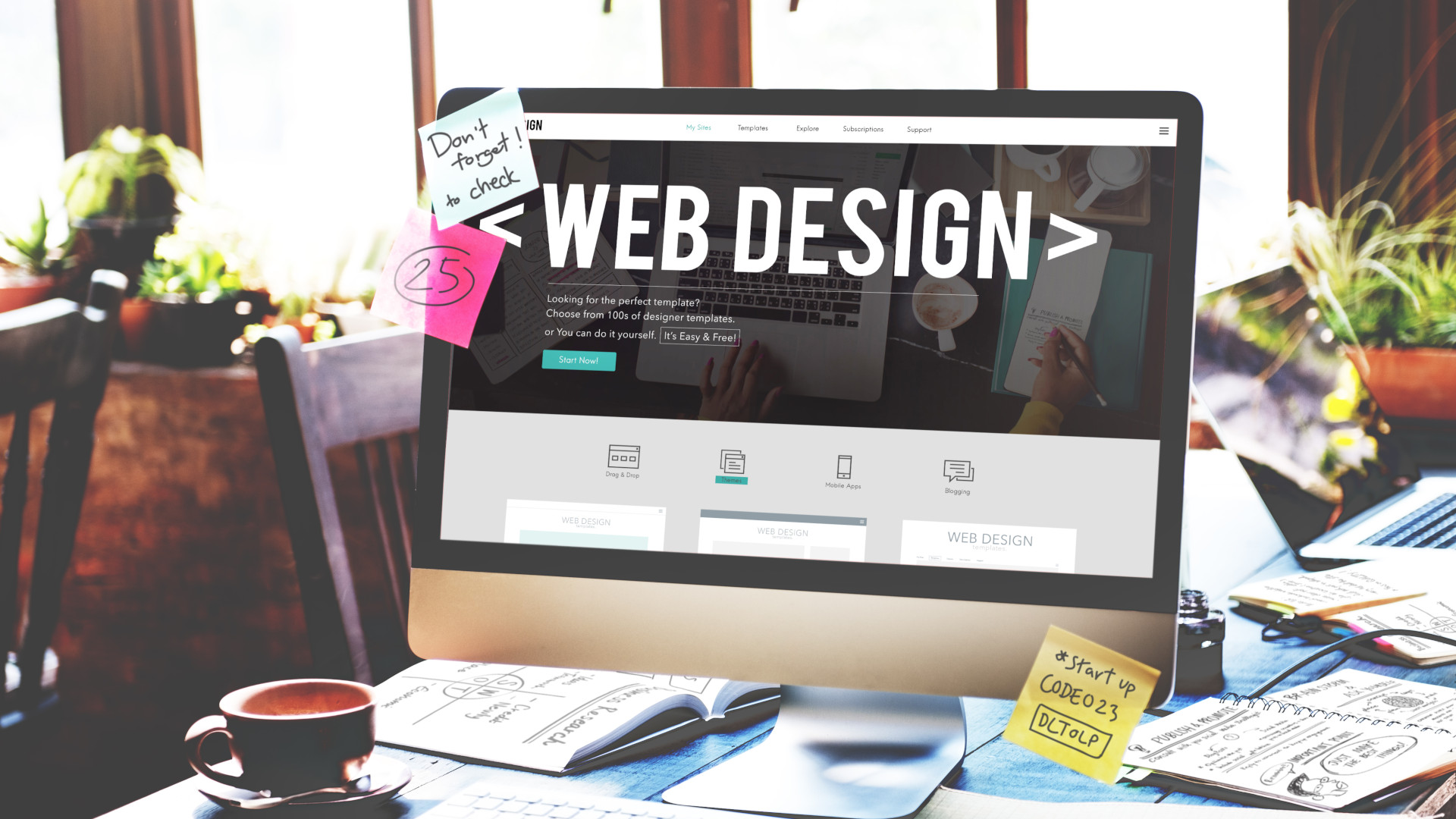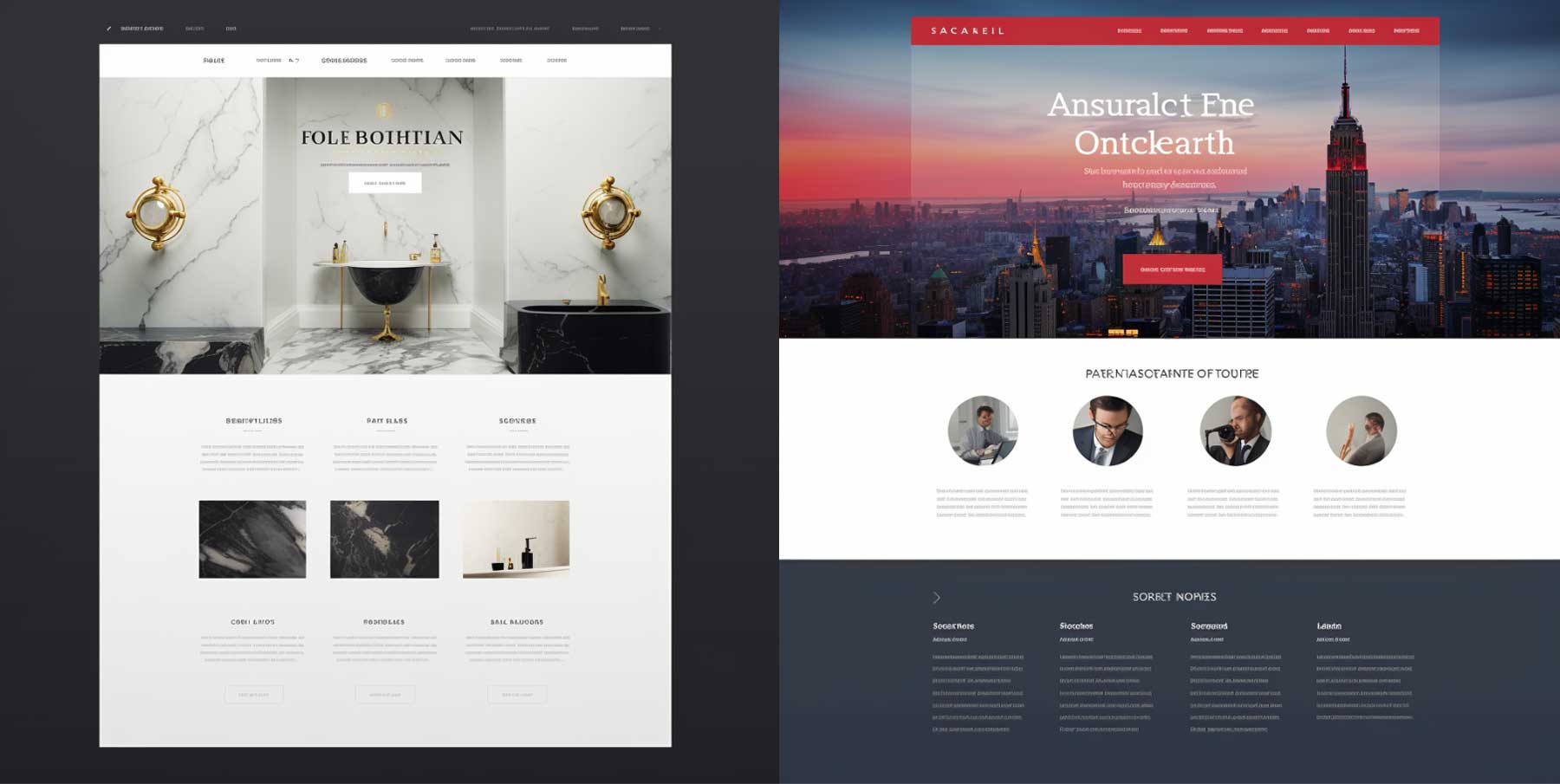How Website Design Affects User Experience and Customer Engagement
How Website Design Affects User Experience and Customer Engagement
Blog Article
Modern Website Layout That Records Focus and Converts
In an increasingly electronic landscape, modern internet site layout has actually become a crucial consider capturing customer attention and driving conversions. By tactically employing visual power structure, receptive designs, and engaging interactive elements, developers can develop experiences that not just bring in site visitors however also help with purposeful communications. Furthermore, effective call-to-action techniques play an essential function in leading individuals toward wanted end results. As we discover these crucial parts, it becomes clear that comprehending their interplay can considerably influence a site's performance and user complete satisfaction. What are the vital aspects that really make a difference?
Significance of Visual Hierarchy
Aesthetic hierarchy is a vital element in internet site design, as it guides customers' attention and boosts their overall experience. By tactically organizing content, designers can direct users to the most essential info first, thus raising involvement and improving use.
Including a sensible circulation in material plan is vital; for circumstances, placing one of the most vital info at the top of a page promotes immediate acknowledgment. Consistent use of typography, such as differing font dimensions and designs, assists establish a clear content structure. This company not just aids in navigation however additionally constructs count on, as individuals feel more comfortable when they can easily locate what they are seeking.
Eventually, a well-executed aesthetic pecking order not only improves aesthetic appeal yet also significantly affects user actions. By focusing on essential components and ensuring a seamless experience, developers can properly transform site visitors into consumers, enhancing the importance of this fundamental layout concept in contemporary website growth.
Responsive Style for All Tools
Developing a smooth experience across various gadgets is vital in today's digital landscape, where customers access websites from smart devices, desktops, and tablet computers alike. Receptive design is an essential method that guarantees sites adjust fluidly to different display orientations, sizes, and resolutions. By utilizing adaptable grids, photos, and CSS media questions, developers can create designs that keep visual integrity and performance, no matter the gadget being utilized.
The importance of responsive design extends past aesthetics; it straight affects individual interaction and conversion prices. A website that operates well on all tools encourages longer visits and minimizes bounce rates, as users are most likely to interact with material that is simple to navigate. Moreover, search engines, especially Google, focus on mobile-friendly websites in their rankings, making receptive style a crucial element of seo (SEO)
Incorporating receptive style not just improves customer experience however additionally improves the growth procedure. By creating a solitary website that works throughout tools, businesses can conserve time and sources contrasted to developing separate mobile and desktop versions. Ultimately, receptive design is a fundamental technique for modern-day website style, guaranteeing access and satisfaction for all individuals, no matter their device.
Engaging Interactive Components
While a receptive layout lays the groundwork for a useful site, incorporating interesting interactive elements is critical for capturing individual focus and fostering deeper connections. Website Design. Interactive aspects, such as computer animations, quizzes, and click here for info clickable infographics, create a more dynamic customer experience, motivating site visitors to spend even more time on the site
Incorporating interactive attributes can likewise direct customers via you could check here complex information, making it simpler to digest web content. Interactive sliders can highlight product variations, while ingrained video clips can give demonstrations or testimonials that resonate more than fixed images or text. In addition, gamification strategies, like rewards for finishing tasks or involving with content, can improve customer inspiration and retention.
Reliable usage of interactive elements not only enhances the individual experience yet can also lead to higher conversion prices. It is important to stabilize interactivity with performance; excessively complex features might hinder site speed, negatively influencing user complete satisfaction.
Structured Navigation Practices
Efficient navigation is a keystone of any type of successful web site, as it straight influences user experience and web content ease of access. Streamlined navigation methods guarantee that customers can conveniently locate details, enhancing their interaction with the site. A well-structured navigating menu need to be basic and instinctive, typically featuring a minimal number of main categories to prevent frustrating visitors.
To achieve streamlined navigation, developers must focus on a hierarchical framework that realistically arranges material. Implementing breadcrumb tracks can provide customers with context concerning their existing area within the website, enabling smooth backtracking. Furthermore, making use of drop-down food selections can successfully save area while still offering access to subcategories.
Receptive style is essential, as navigation should be functional throughout all devices (Website Design). Mobile individuals, in specific, gain from touch-friendly food selections and collapsible sections that maintain functionality without endangering aesthetics

Effective Call-to-Action Techniques
A well-crafted call-to-action (CTA) is important for directing customers towards wanted results on a site, as it encourages them to engage with content or Look At This make a purchase. To maximize their efficiency, CTAs should be clear, compelling, and purposefully placed throughout the site.
First, make use of action-oriented language that interacts necessity or worth, such as "Begin," "Join Currently," or "Claim Your Discount rate." This language not only motivates users but likewise sets clear assumptions concerning the next steps.
2nd, consider design components; CTAs need to stick out aesthetically with contrasting colors, enough whitespace, and famous positioning. A button that is easy to see and click rises the possibility of customer interaction.
In addition, customizing CTAs based upon user habits or demographics can substantially enhance involvement. Customized messages reverberate more with users, driving higher conversion prices.

Conclusion
These components collectively improve individual experience, ensuring that visitors stay involved and inspired to explore content additionally. By prioritizing these layout principles, organizations can considerably boost user retention and conversion prices, ultimately leading to higher success in the electronic landscape.
In a significantly digital landscape, modern internet site style has arised as a pivotal factor in recording customer interest and driving conversions.Aesthetic pecking order is an important element in web site layout, as it overviews individuals' focus and boosts their overall experience.The importance of responsive design expands beyond aesthetics; it directly influences individual engagement and conversion rates.Incorporating receptive design not only enhances user experience however likewise streamlines the advancement process. Eventually, receptive design is a fundamental technique for modern website layout, making sure ease of access and complete satisfaction for all customers, no matter of their tool.
Report this page